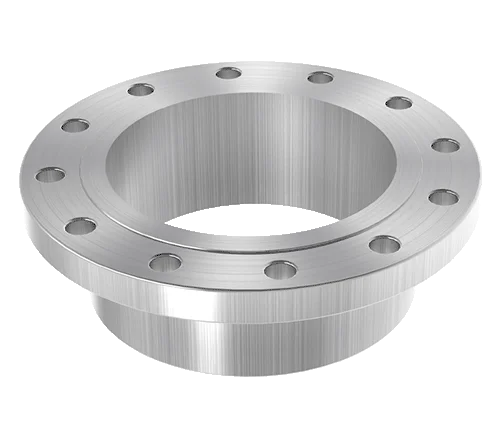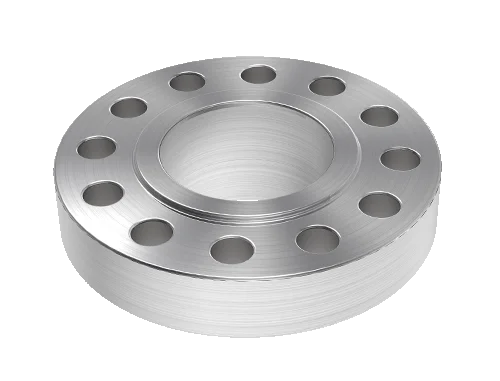Shandong Qilu lndustrial Co.,Ltd.
Common Header Flange Problems and How to Troubleshoot Them
Introduction

Header flanges are critical components in exhaust systems, ensuring a secure connection between the exhaust manifold and the rest of the exhaust system. However, like any mechanical part, they can experience issues that compromise their performance. In this blog post, we’ll explore some common header flange problems encountered by automotive enthusiasts and professionals alike. We’ll also discuss effective troubleshooting strategies to address these issues and ensure optimal exhaust system function.
Understanding Header Flanges
Before delving into specific problems and troubleshooting methods, let’s briefly discuss what header flanges are and their importance in exhaust systems. Head flanges are typically made of metal and serve as the interface between the exhaust manifold and the exhaust pipes. They are designed to provide a secure seal to prevent exhaust leaks and ensure efficient exhaust flow from the engine.
Common Header Flange Problems
- Exhaust Leaks: One of the most prevalent issues with header flanges is exhaust leaks. These leaks can occur due to various factors, including improper installation, corrosion, or damage to the flange surface. They can result in reduced engine performance, increased emissions, and undesirable noise levels.
- Warped or Distorted Flanges: Header flanges can become warped or distorted over time, especially in high-temperature environments. This distortion can lead to poor sealing between the manifold and the exhaust pipes, resulting in exhaust leaks and decreased performance.
- Corrosion and Rust: Like other metal components in the exhaust system, head flanges are susceptible to corrosion and rust. Corrosion can weaken the flange material, compromising its structural integrity and sealing capabilities. Rust buildup can also impede the proper mating of the flange surfaces, leading to leaks and other issues.
- Gasket Failure: Header flanges rely on gaskets to create a tight seal between mating surfaces. Gasket failure, whether due to age, improper installation, or poor-quality materials, can result in exhaust leaks and reduced performance. Identifying and addressing gasket issues is essential for maintaining the integrity of the exhaust system.
- Bolt Loosening or Breakage: The bolts or studs used to secure head flanges in place can loosen over time due to engine vibrations and thermal cycling. In some cases, bolts may even break, compromising the seal between the manifold and the exhaust pipes. Proper torque specifications and regular inspection are crucial for preventing bolt-related problems.
Troubleshooting Header Flange Problems
Now that we’ve identified some common header flange problems, let’s discuss how to troubleshoot and address these issues effectively:
- Examine Flange Surfaces: Inspect the mating surfaces of the header flange and manifold for signs of damage, warping, or corrosion. If necessary, machine or replace the flanges to ensure proper sealing.
- Check Gaskets: Inspect the condition of the gaskets and replace them if damaged or worn out. Ensure that the gaskets are the correct size and material for your application to prevent future leaks.
- Tighten Bolts Properly: Use a torque wrench to tighten the bolts or studs securing the head flange to the manifold and exhaust pipes. Refer to the manufacturer’s specifications for the appropriate torque values to prevent overtightening or undertightening.
- Address Rust and Corrosion: Remove any rust or corrosion buildup on the flange surfaces using a wire brush or sandpaper. Apply a rust inhibitor or high-temperature paint to protect the flanges from further corrosion.
- Consider Upgrading: If you frequently encounter head flange problems, consider upgrading to higher-quality flanges made from durable materials such as stainless steel. Upgrading can improve longevity and reduce the risk of future issues.
Common header flange problems and their troubleshooting methods:

| Problem | Troubleshooting Method |
|---|---|
| Exhaust Leaks | – Inspect flange surfaces for damage or warping.<br>- Replace damaged gaskets.<br>- Tighten bolts to recommended torque specifications.<br>- Consider upgrading to higher-quality gaskets or flanges if necessary. |
| Warped or Distorted Flanges | – Machine or replace distorted flanges.<br>- Ensure proper mating of flange surfaces.<br>- Use flatness gauges to verify flatness. |
| Corrosion and Rust | – Remove rust and corrosion buildup using wire brushes or sandpaper.<br>- Apply rust inhibitors or high-temperature paint to protect flanges.<br>- Consider upgrading to stainless steel flanges for improved corrosion resistance. |
| Gasket Failure | – Inspect gaskets for damage or wear.<br>- Replace damaged gaskets with new ones.<br>- Ensure correct size and material compatibility.<br>- Use high-quality gaskets from reputable manufacturers. |
| Bolt Loosening or Breakage | – Tighten bolts to recommended torque specifications using a torque wrench.<br>- Use thread-locking compounds to prevent loosening.<br>- Replace broken bolts with new ones.<br>- Consider using stronger or higher-grade bolts if necessary. |
This table provides a handy reference for identifying common header flange problems and implementing appropriate troubleshooting measures to address them effectively.
Conclusion
Header flanges play a crucial role in the performance and reliability of exhaust systems. By understanding common problems and employing effective troubleshooting strategies, you can ensure optimal sealing and performance of your header flanges. Regular maintenance, proper installation, and attention to detail are key to avoiding issues and enjoying a trouble-free exhaust system.
FAQ
Q:How often should I inspect my header flanges for problems?
A:It’s recommended to inspect your header flanges during routine maintenance intervals or whenever you notice symptoms of exhaust leaks or performance issues.
Q:Can I reuse old gaskets when reinstalling header flanges?
A:While it’s possible to reuse gaskets in some cases, it’s generally recommended to install new gaskets to ensure a proper seal and prevent leaks.
Q:What are the signs of a failing header flange gasket?
A:Signs of a failing gasket include exhaust leaks, loud or irregular engine noise, and decreased engine performance. If you notice any of these symptoms, it’s essential to inspect and replace the gaskets as needed.
